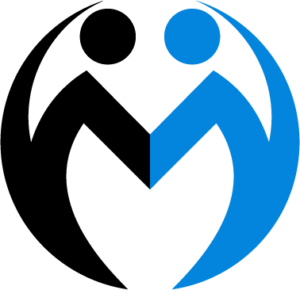What Is Low Back Pain?
The area of the back that starts below the ribcage is called the low back or lumbar region. Low back pain happens to almost everyone at some point in their lives. It’s one of the main reasons why people in Abbotsford. The good news is that it usually gets better on its own. If it doesn’t, your doctor may be able to help in a number of ways.
One of the most common health problems is back pain. Studies show that eight out of ten Americans will have lower back pain at some point in their lives. Many people fear going for a low back pain treatment in Abbotsford because they believe it is costly. Our low back pain treatment in Abbotsford will help you with the perfect exercise cycle.

It could have happened while you were working in the yard or doing housework. Or, you might have back pain because of an old sports injury or a long-term illness like arthritis or ankylosing spondylitis.
If you have back pain that comes on quickly or is very bad, you should see a doctor or a physical therapist. It’s the same with pain that won’t go away.
But sometimes you can take care of aches and pains on your own.
Wilson Ray, MD, chief of spine surgery in the Department of Neurological Surgery at Washington University School of Medicine in St. Louis, says that home remedies tend to work better when done together than when done alone.
1. Keep Moving
When you’re hurting, you might not feel like it. But this is probably what your doctor will tell you to do first.
“Patients with single episodes of back pain often think they can’t do anything,” Ray says.
Try to keep moving and doing the things you normally do every day. It can be a 30-minute walk at a good pace or going around the block with your dog. Get up and move around at least three times a week.
Medela Rehab says that sitting around all day makes the muscles around the spine and in the back weak. This, in turn, can make the spine less stable and cause long-term pain.
2. Stretch and Strengthen
Strong muscles, especially in the middle of your stomach, help keep your back straight. Strength and flexibility may help relieve pain and keep it from coming back.
Ray says, “I usually tell people to do that first thing in the morning.” But if you are older or worried about doing too much, you can stretch and do your strengthening exercises later in the day when your body is already warm.
Some ways to strengthen your core and the muscles around your hips are yoga, Pilates, and tai chi. One exercise that works your whole upper and lower back is the “flying position,” in which you lie on your stomach and lift your legs and arms up.
3. Keep a Good Posture
This helps make your lower back feel better. You can keep your spine straight with tape, straps, or stretchy bands. Try to keep your head in the middle of your hips. Don’t slump your shoulders or look forward with your chin.
If you work in front of a computer screen, rest your arms evenly on the table or desk and keep your eyes level with the top of the screen. Get out of your chair and walk and stretch often.
4. Maintain a Healthy Weight
Getting rid of extra weight makes your lower back feel better.
Hemani says that losing weight really helps with pain because it lowers the amount of mechanical force on the spine.
If you need help, talk to your doctor about what kind of diet and workout plan might work best for you. Most technicians offer reasonable prices for the procedure and high-quality facilities for low back pain treatment in Abbotsford.
5. Quit Smoking
Research shows that you may be four times more likely to have degenerative disc disease or other spine problems if you smoke than if you don’t.
Nicotine in cigarettes and other tobacco products can make your spinal bones weaker and take away important nutrients from the soft discs that cushion your joints. Your back muscles won’t get stiff and sore if your spine is healthy.
6. Try Ice and Heat
You might have heard that one is better for back pain than the other. The short answer is that whatever works best for you is the best choice.
Ray says, “Some people come in and swear by heat or ice.””You might want to try both, and if you do, you’ll probably find that one helps you more.”
When your back hurts because of swelling or inflammation, ice is often the best thing to do. If you want to loosen up stiff or tight muscles, a heating pad might be better.
Hemani says that you should only use ice or heat for 20 minutes at a time. And don’t use them if you are also putting creams or ointments on your skin to help with muscle pain.
7. Know Your OTC Medications
Pain relievers that don’t need a prescription can help with aches and stiffness in the muscles. Nonsteroidal anti-inflammatory drugs (NSAIDs) and acetaminophen are the two main types of medicines you can buy over-the-counter. Aspirin, ibuprofen, and naproxen are all NSAIDs.
As their name suggests, NSAIDs help reduce inflammation, which can cause swelling and pain. But acetaminophen does not relieve inflammation. For occasional back pain, you can take either type of pain reliever. Hemani says that NSAIDs may work a little bit better for people with arthritis of the spine or other inflammatory conditions.
8. Rub on Medicated Creams
When your back is stiff, sore, and tense, creams, salves, ointments, or patches may help. Many of these products have ingredients like menthol, camphor, or lidocaine that can cool, heat, or numb the affected area.
Put creams on the places that hurt. If you can’t reach the spot, ask someone else to do it for you. Medela Rehab says, “It won’t be a big help, but it can calm things down.”
9. Ask About Supplements
Vitamins and minerals are best gotten from food. But talk to your doctor about whether supplements could help.
For example, many people don’t get enough vitamin D, which is important for healthy bones. This can happen if you don’t get enough sun or if your body can’t get enough vitamin D from the food you eat.
If you don’t get enough magnesium, your muscles may get weak and cramp. Hemani says that turmeric, a spice that is bright yellow and is related to ginger, may help calm inflammation.
Before taking any supplements, you should always talk to your doctor.
10. Throw in the Towel
A rolled-up towel can be helpful when you have back pain. When you’re lying down, try putting it under your pelvis. Let your hips rest on the towel. This will help loosen up your lower back. Find out how you can sleep on your back.
Sometimes, especially after an injury or surgery, a back brace can help. But you shouldn’t wear them too much or for too long. Ray says, “People get used to it, and it actually makes those muscles lazy.”
Hemani says that no matter what home treatment you try if it helps and makes you feel better, you should keep doing it. Patients come from all over the world to aim for this type of Kinesiology therapy, especially the low back pain treatment in Abbotsford.

